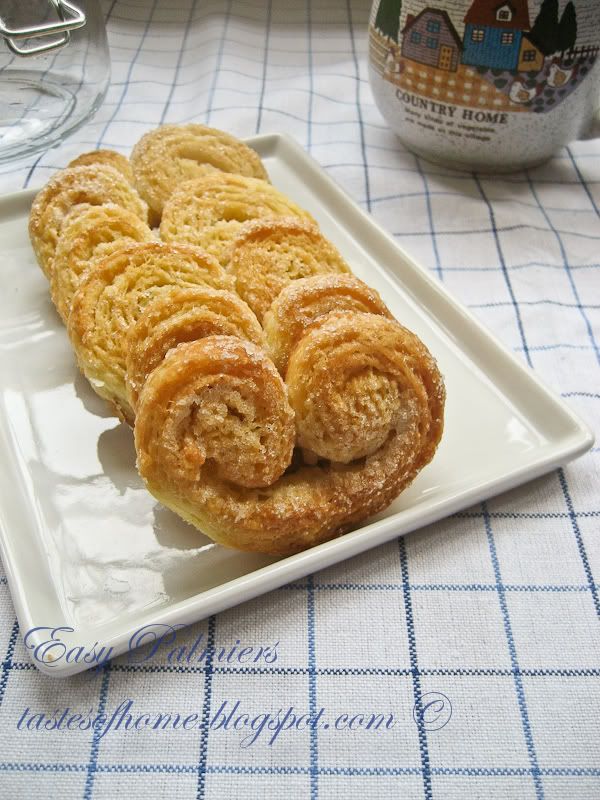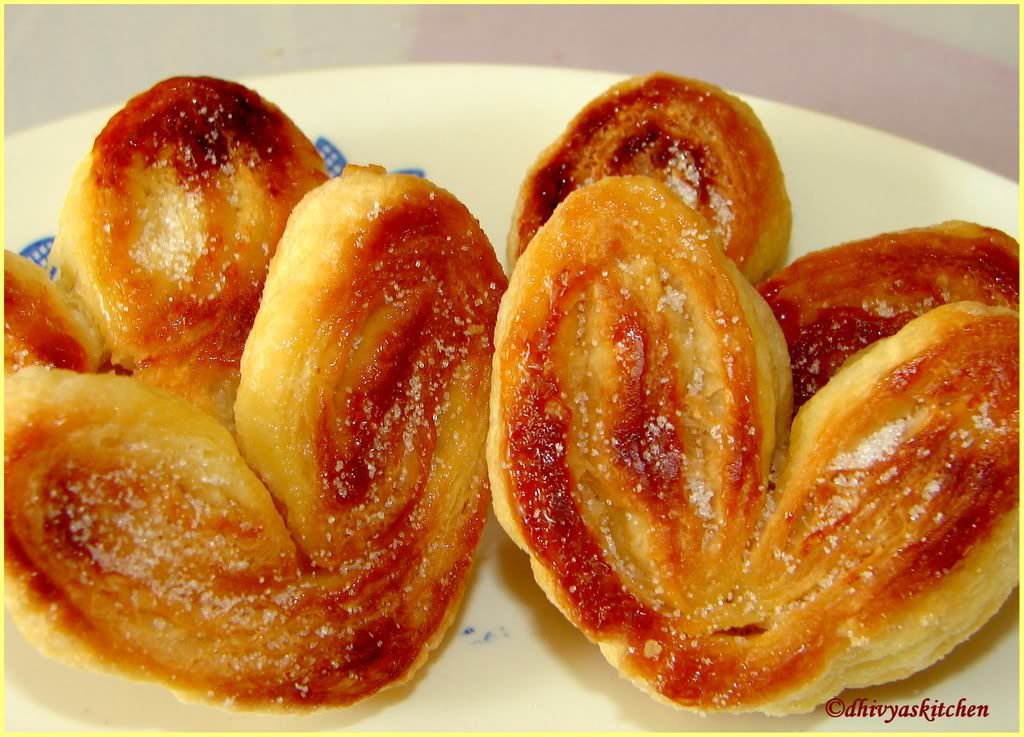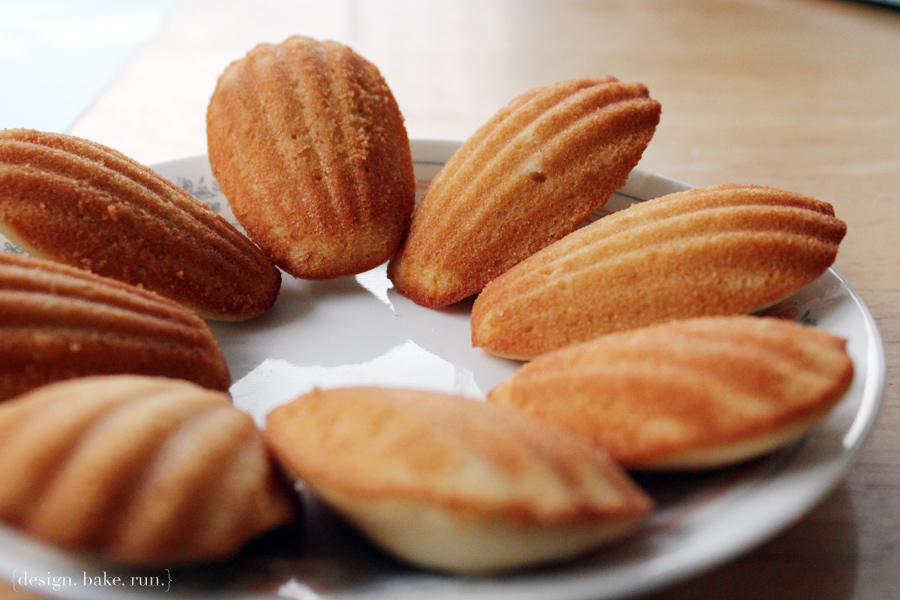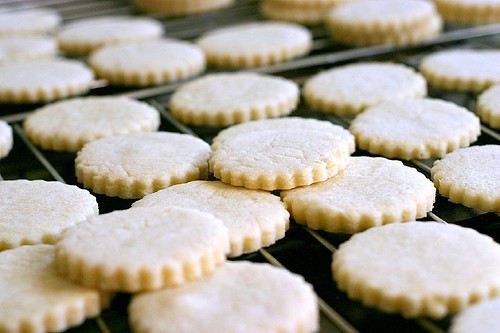Source:- Google.com.pk
A macaron (/mɑːkɑːrɔːn/ mah-kah-RŌN;[1] French pronunciation: [makaˈʁɔ̃][2]) is a sweet meringue-based confection made with eggs, icing sugar, granulated sugar, almond powder or ground almond, and food colouring. The macaron is commonly filled with ganache, buttercream or jam filling sandwiched between two biscuits. The name is derived from the Italian word macarone, maccarone or maccherone, the Italian meringue.
The confection is characterised by smooth, squared top, ruffled circumference (referred to as the "foot" or "pied"), and a flat base. It is mildly moist and easily melts in the mouth.[3] Macarons can be found in a wide variety of flavors that range from the traditional (raspberry, chocolate) to the new (foie gras, matcha).[4]
The macaroon is often mistaken as the macaron; many have adopted the French spelling of macaron to distinguish the two items in the English language. However, this has caused confusion over the correct spelling. Some recipes exclude the use of macaroon to refer to this French confection while others think that they are synonymous.[5] In reality, the word macaroon is simply the English translation of the French word macaron, so both pronunciations are technically correct depending on personal preference and context.[5][6] In a Slate article on the topic, Stanford Professor of Food Cultures Dan Jurafsky indicates that 'macaron' (also, "macaron parisien", or "le macaron Gerbet") is the correct spelling for the confection.[7]
Contents
1 History
2 Common flavors
3 Variations
3.1 French regional variations
3.2 Switzerland
3.3 Korea
3.4 Japan
4 Popularity
5 See also
6 Bibliography
7 References
8 Further reading
9 External links
History
Picture from Dictionnaire encyclopédique de l'épicerie et des industries annexes, by Albert Seigneurie, edited by L'Épicier in 1904, page 431.
Although the macaron is predominantly a French confection, there has been much debate about its origins. Larousse Gastronomique cites the macaron as being created in 791 in a convent near Cormery. Some have traced its French debut back to the arrival of Catherine de' Medici's Italian pastry chefs whom she brought with her in 1533 upon marrying Henry II of France.[8] In 1792, macarons began to gain fame when two Carmelite nuns, seeking asylum in Nancy during the French Revolution, baked and sold the macaron cookies in order to pay for their housing. These nuns became known as the "Macaron Sisters". In these early stages, macarons were served without special flavors or fillings.[9]
It was not until the 1830s that macarons began to be served two-by-two with the addition of jams, liqueurs, and spices. The macaron as it is known today, composed of two almond meringue discs filled with a layer of buttercream, jam, or ganache filling, was originally called the "Gerbet" or the "Paris macaron." Pierre Desfontaines of the French pâtisserie Ladurée has sometimes been credited with its creation in the early part of the 20th century, but another baker, Claude Gerbet, also claims to have invented it.[10][11][12]
French regional variations
Several French cities and regions claim long histories and variations, notably Lorraine (Nancy and Boulay), Basque Country (Saint-Jean-de-Luz), Saint-Emilion, Amiens, Montmorillon, Le Dorat, Sault, Chartres, Cormery Joyeuse and Sainte-Croix in Burgundy.
Macarons d'Amiens, made in Amiens, are small, round-shaped biscuit-type macarons made from almond paste, fruit and honey, which were first recorded in 1855.[14]
The city of Montmorillon is well known for its macarons and has a museum dedicated to it. The Maison Rannou-Métivier is the oldest macaron bakery in Montmorillon, dating back to 1920. The traditional recipe for Montmorillon macarons remains unchanged for over 150 years.[15]
The town of Nancy in the Lorraine region has a storied history with the macaron. It is said that the abbess of Remiremont founded an order of nuns called the "Dames du Saint-Sacrement" with strict dietary rules prohibiting the consumption of meat. Two nuns, Sisters Marguerite and Marie-Elisabeth are credited with creating the Nancy macaron to fit their dietary requirements. They became known as the 'Macaron Sisters' (Les Soeurs Macarons). In 1952, the city of Nancy honored them by giving their name to the Rue de la Hache, where the macaroon was invented.[16]
Switzerland
In Switzerland the Luxemburgerli (also Luxembourger) is a brand name of confectionery made by the Confiserie Sprüngli in Zürich, Switzerland. A Luxemburgerli is a macaron[17][18][19] comprising two disks of almond meringue[20] with a buttercream filling.[21][22] Luxemburgerli are smaller and lighter than macarons from many other vendors. It is said to be lighter and more airy in consistency.[23] Flavors include: vanilla, chocolate, stracciatella (chocolate chip), caramel, hazelnut, champagne, amaretto, chestnut, mocha, cinnamon, lemon, mandarin, and raspberry. Many flavors are seasonal. The shelf life is three to five days, refrigerated.
Zurich, Switzerland, Sprüngli confectionery shop display with Luxemburgerli.
Luxemburgerli were invented by the confectioner Camille Studer who brought the recipe to Zürich after creating them in a Luxembourg confectionery shop (Confiserie Namur) in 1957. There, the recipe was refined for a confectionery contest. The name Luxemburgerli is derived from the nickname which a colleague bestowed on Studer, whose family originated in Luxembourg. The original name, Baiser de Mousse (foam kiss in French), perceived as appropriate for the new creation, was changed to Gebäck des Luxemburgers ("Luxemburger's confection") which became, in Swiss German, Luxemburgerli ("little Luxembourger").
Korea
Macarons are popular in South Korea,[24] pronounced as "ma-ka-rong" in Korean. Green tea powder or leaves can be used to make green tea macarons.[25][26]
Japan
Macarons in Japan are a popular confection known as "makaron".[27] There is also a version of the same name which substitutes peanut flour for almond and is flavored in wagashi style, widely available in Japan.
Popularity
In Paris, the Ladurée chain of pastry shops has been known for its macarons for about 150 years.[28][29] In France, McDonald's sells macarons in their McCafés (sometimes using advertising that likens the shape of a macaron to that of a hamburger).[28] McCafé macarons are produced by Château Blanc, which, like Ladurée, is a subsidiary of Groupe Holder, though they do not use the same macaron recipe.[28]
Outside of Europe, the French-style macaron can be found in Canada[30] and the United States.
In Australia, Adriano Zumbo along with the TV series MasterChef have seen the macaron become a popular sweet treat, and it is now sold by McDonald's in its McCafe outlets.[35]
On an global level, March 20 celebrates "Macaron Day". Created in 2005 in Paris by la Maison Pierre Hermé, it is a tradition that spread across the world. On this day, participating bakeries and macaron shops around the world offer customers one free sample macaron. A percentage of all additional macaron sales is donated to a local charity.[36]
French Biscuits Biscuits And Gravy Recipe and Cookies Packets Images Brands Clipart and Sausage Gravy Baseball Photos Images
French Biscuits Biscuits And Gravy Recipe and Cookies Packets Images Brands Clipart and Sausage Gravy Baseball Photos Images
French Biscuits Biscuits And Gravy Recipe and Cookies Packets Images Brands Clipart and Sausage Gravy Baseball Photos Images
French Biscuits Biscuits And Gravy Recipe and Cookies Packets Images Brands Clipart and Sausage Gravy Baseball Photos Images
French Biscuits Biscuits And Gravy Recipe and Cookies Packets Images Brands Clipart and Sausage Gravy Baseball Photos Images
French Biscuits Biscuits And Gravy Recipe and Cookies Packets Images Brands Clipart and Sausage Gravy Baseball Photos Images
French Biscuits Biscuits And Gravy Recipe and Cookies Packets Images Brands Clipart and Sausage Gravy Baseball Photos Images
French Biscuits Biscuits And Gravy Recipe and Cookies Packets Images Brands Clipart and Sausage Gravy Baseball Photos Images
French Biscuits Biscuits And Gravy Recipe and Cookies Packets Images Brands Clipart and Sausage Gravy Baseball Photos Images
French Biscuits Biscuits And Gravy Recipe and Cookies Packets Images Brands Clipart and Sausage Gravy Baseball Photos Images
French Biscuits Biscuits And Gravy Recipe and Cookies Packets Images Brands Clipart and Sausage Gravy Baseball Photos Images
French Biscuits Biscuits And Gravy Recipe and Cookies Packets Images Brands Clipart and Sausage Gravy Baseball Photos Images
French Biscuits Biscuits And Gravy Recipe and Cookies Packets Images Brands Clipart and Sausage Gravy Baseball Photos Images
French Biscuits Biscuits And Gravy Recipe and Cookies Packets Images Brands Clipart and Sausage Gravy Baseball Photos Images
French Biscuits Biscuits And Gravy Recipe and Cookies Packets Images Brands Clipart and Sausage Gravy Baseball Photos Images
French Biscuits Biscuits And Gravy Recipe and Cookies Packets Images Brands Clipart and Sausage Gravy Baseball Photos Images
French Biscuits Biscuits And Gravy Recipe and Cookies Packets Images Brands Clipart and Sausage Gravy Baseball Photos Images
















No comments:
Post a Comment